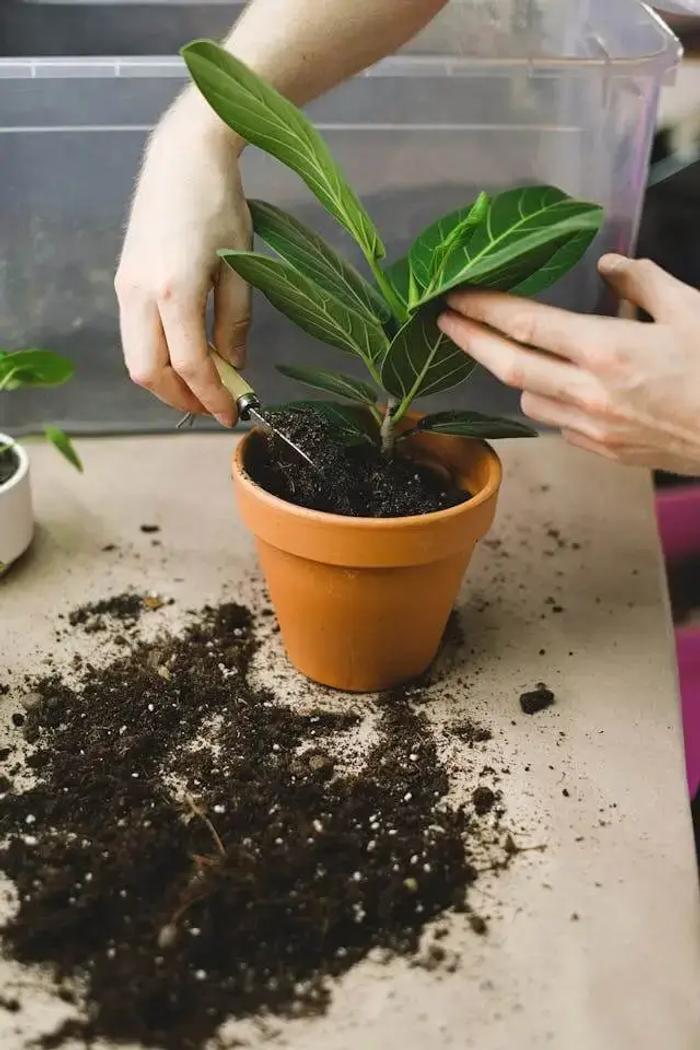If you’ve ever noticed a fuzzy white layer creeping across your plant’s soil, you’re not alone — and you're probably wondering what caused it. Mold in houseplant soil is a common issue, especially in warm, damp, and low-light environments. While it might look alarming, the presence of mold often points to a few fixable care habits. In this article, we’ll break down exactly why mold shows up in potting mix, the most likely culprits, and what you can do to prevent it from returning.
1. Overwatering
The #1 culprit of moldy soil is too much moisture. If the top few inches of soil never get a chance to dry out, mold spores can thrive and spread. This is especially true in pots without proper drainage.
What to do:
- Let the top inch or two dry before watering again.
- Use pots with drainage holes.
- Water based on soil dryness, not a fixed schedule.
2. Poor Airflow
Lack of ventilation traps humidity and slows down soil evaporation — giving mold a chance to settle. Plants tucked in corners or crowded shelves are more prone to this issue.
What to do:
- Give your plant some breathing room.
- Use a fan in rooms with multiple plants.
- Occasionally rotate or reposition plants to increase airflow.
3. Rich Organic Soil
Soils high in compost, peat, or bark hold more moisture and contain organic material mold can feed on. This is great for some tropical plants but not always necessary for succulents or low-water varieties.
What to do:
- Choose a potting mix suited for your plant’s moisture needs.
- Add perlite or sand to improve drainage if needed.
4. Low Light Conditions
Plants in low-light areas dry out more slowly. Damp, dark spots are a recipe for mold — especially if paired with high humidity or overwatering.
What to do:
- Move your plant to a spot with brighter indirect light if possible.
- Monitor how long the soil takes to dry between waterings.
5. Humidity and Humidifiers
High humidity is great for many tropical plants — but too much can encourage mold, especially if airflow is poor. Placing a humidifier too close to your plants can oversaturate the soil surface.
What to do:
- Position humidifiers at least a few feet away from pots.
- Use a hygrometer to track room humidity (40–60% is ideal for most plants).
Mold in Soil: Frequently Asked Questions
Is mold in plant soil harmful to my plant?
Most saprophytic ‘white fuzz’ only feeds on decaying organic matter, so it rarely damages roots or leaves—unless it blankets the soil thick enough to trap moisture and starve roots of air.
Can mold in soil harm humans or pets?
For most people it’s harmless, but anyone with mold allergies, asthma, or a compromised immune system should wear gloves and work outdoors—spores can trigger sneezing, coughing, or skin irritation.
Why does my soil grow mold even if I don’t overwater?
Poor airflow, low light, and nutrient-dense mixes all extend the time soil stays damp—prime real estate for mold spores.
How can I tell if the mold is dangerous?
Rapid mold plus yellowing foliage often signals root rot (Pythium, Phytophthora) or fungal gnats. Check roots for brown mush; if they’re rotten, trim, treat with fungicide, and repot in fresh mix.
Can I just scrape off the mold?
Step 1 is scraping, but if mold returns within a week, upgrade to a cinnamon dusting or a mild baking-soda spray (recipe below). Severe cases? Repot completely and discard the old mix.
Final Thoughts
Moldy soil is usually a sign that your plant’s environment is too moist, stagnant, or organic-rich. The good news? It’s fixable. Adjust your watering habits, improve airflow, and keep an eye on your soil type and lighting. With a few tweaks, your plant’s soil will stay healthy, mold-free, and ready to support lush growth

